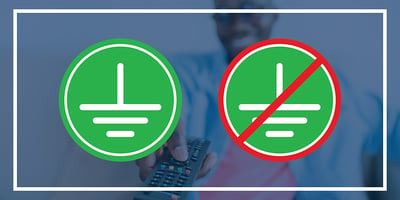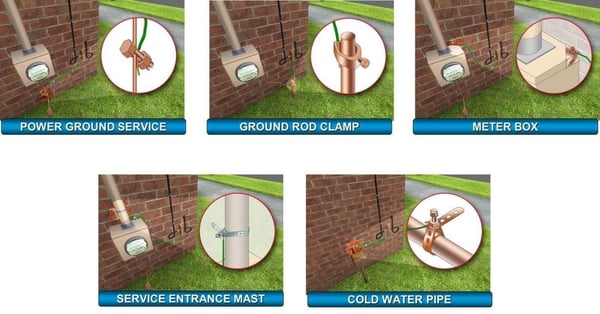
Bonding is the electro-mechanical joining of two or more conductors, to form a conductive path that ensures electrical continuity. Grounding is connecting a circuit to the earth or to another conductor that is itself connected to earth.
Broadband cable systems are usually connected to the ground to limit the voltage potential between the cable sheath in the house and the other grounded items in the house, including water pipes, appliances and anything else connected to the utility.
A cable not properly grounded can have high electric potential when compared to the utility ground in a house. Grounding the cable system to the same ground used by the utility minimizes voltage that could exist between them.
Methods for Bonding CATV
Below are several methods of bonding the CATV system. In each case, the system is bonded to a #6 AWG grounding wire. In many cases, bonding can be done using existing utilities such as water pipes or meter boxes.

|
For more information and to schedule training on bonding and grounding for your techs, call +1 315-431-7200, or email customerservice@ppc-online.com. We can assist with the numerous requirements to be code compliant and safe. |
Bonding and Grounding for CATV Systems
Below are some facts about grounding and bonding for CATV systems and residences that you should always be aware of:
- Ensure that the path of least resistance will be the ground wire by wire size, proper placement, and proper bonding.
- Coax should be attached to the structure with the proper cable clips.
- Do not impede other services (utilities, etc.)
- Use good craft when locating the wire. Make sure there are no trip points or areas where the wire can be abraded.
- Don’t let wire droop, hang over equipment; attach wire firmly to the wall or supporting structure.
- Coiled ground wires build voltage. Remember, the whole point is to have your ground/bond wire use the path of LEAST resistance!
- Proper torquing of ground screws is required to be code compliant!
NEC is the recommended standard (no force of law unless adopted by the local jurisdiction) that governs the installation of wiring and equipment for residential and commercial installations. The NEC was developed in 1897 by insurance, electrical and architectural groups for the purpose of "the practical safeguarding of persons and property from hazards arising from the use of electricity". The standard is updated every three years; with the 2020 edition being the most current.
Since 1911, the NFPA (National Fire Protection Association) has administered the NEC process and established the rules in developments. For the cable industry, outside plant construction rules are published by the IEEE.



